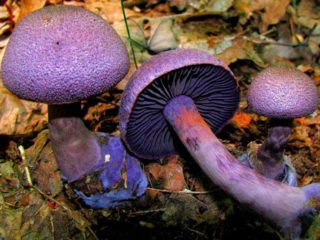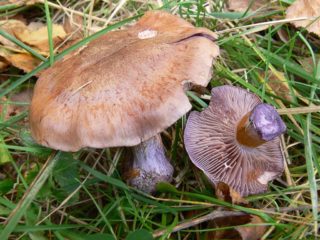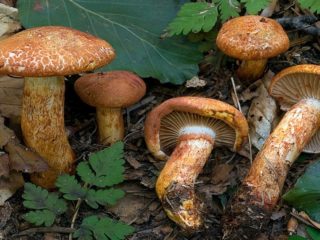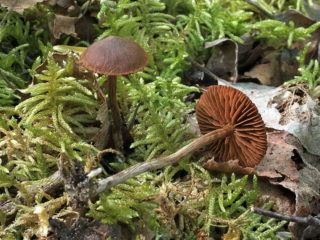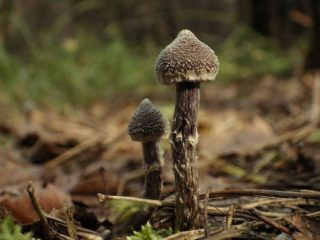Content
The webcap is bracelet or red; it is listed in biological reference books under the Latin name Cortinarius armillatus. A species from the Spiderweb family.
What does the bracelet look like
Bracelet-like webcap is above average in size, with a catchy appearance. It grows up to 20 cm. Hat-toothed, lamellar, with a veil similar in structure to a cobweb, hence the specific name. With a wide, brightly colored cap, the diameter of which in adult specimens is within 12-15 cm.
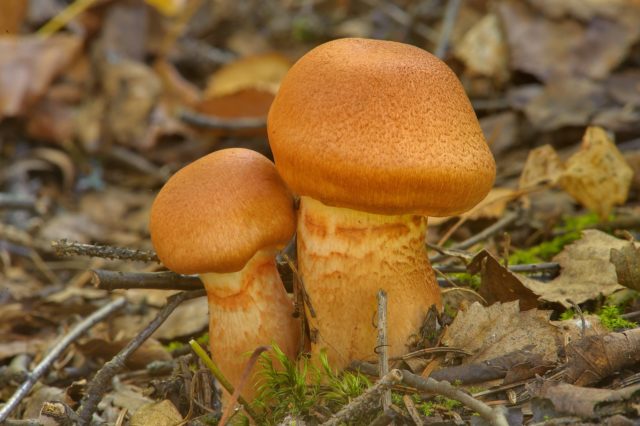
The color of the upper part of the fruiting body is dark orange or brown with a red tint.
Description of the hat
The external characteristics of the bracelets are as follows:
- At the beginning of the growing season, the shape is spherical with concave edges and a bulge in the center.
- As the mushroom matures, the cap takes on a cushion shape, then straightens to a flat-convex with sloping edges, the tubercle becomes less noticeable.
- When the coverlet breaks, along the edge of the cap there are fragments of uneven length in the form of a web.
- The surface is dry, hygrophilous in damp weather, the middle is covered with small scales, fibrous along the edge.
- The plates of the hymenophore are sparsely located, adherent to the pedicle with teeth.
- The color of the spore-bearing layer is brown in young specimens, with a rusty tint in mature specimens.
The pulp is dense, thick, light brown with a musty odor.
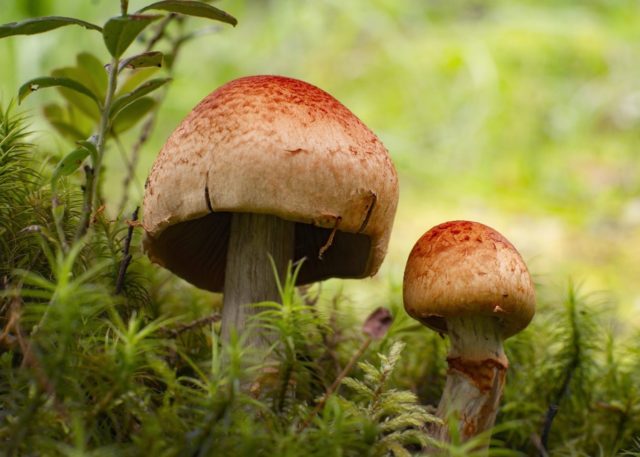
The color of the central part is darker than the edges.
Leg description
The leg grows in length up to 14 cm, thickness - 2-2.5 cm. The fibrous structure appears on the surface in the form of scattered dark longitudinal lines of different sizes. The attachment points of the bedspread form obvious brick-colored bracelets; there can be several or one rings. The base is clavate in shape, the cylindrical stem tapers slightly upward. The surface is light with a gray tint, silky.
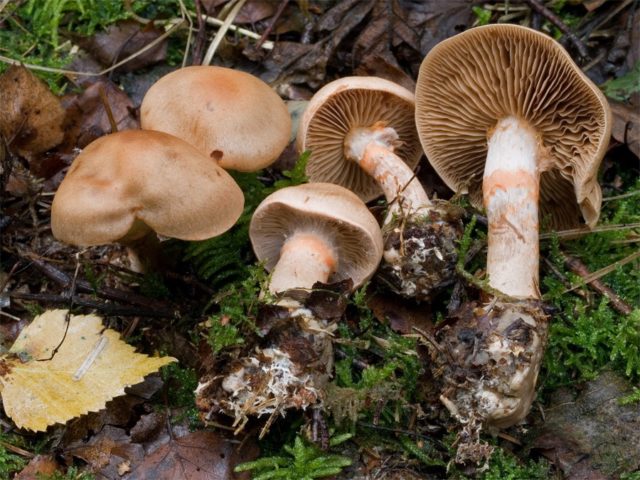
Feature of the species - bright cortines located on the leg, the remains of the bedspread
Where and how it grows
The climatic zone for the growth of the bracelet does not play a role. The necessary conditions for the growing season are high humidity, acidic soil and shaded areas. Forms mycorrhiza with birch, possibly pine. Found in all types of forests where these trees grow. Can be found at the edge of bogs on hummocks, moss bedding. Fruiting is unstable; in the dry season, the yield of the spider web drops sharply. The first specimens appear at the end of August before the temperature drops. Set in 2 pieces. or singly, covering large areas.
Is the mushroom edible or not
Fruit bodies are tasteless, with a specific odor, but no toxic compounds. The mushroom is classified as conditionally edible. But the bracelet cobweb is not popular with mushroom pickers because of the coarse pulp and lack of taste.
Doubles and their differences
There are no official poisonous counterparts in the bracelet webcap, there are several similar species in its family, but you can easily distinguish them, especially since they are all of the same nutritional value.The only mushroom vaguely similar is the most beautiful spider web. But it bears fruit from early spring, it is located only in coniferous massifs. The cap is smaller, the flesh is thinner with a pronounced bulge in the center, the color is solid dark brown.
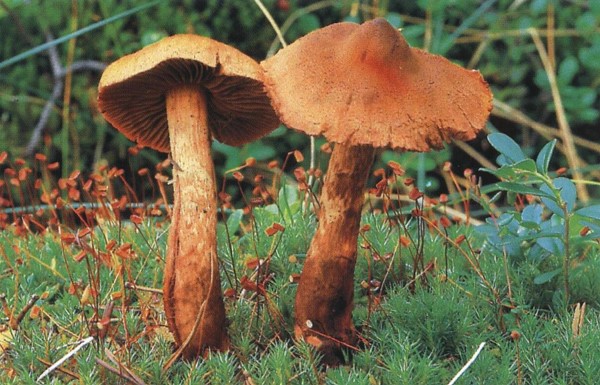
Leg of the same diameter along the entire length, often curved
Conclusion
Bracelet-like webcap forms mycorrhiza with birch, grows in all types of forests where this tree species is found. The fruit body is tasteless with a musty odor, the species is classified as conditionally edible mushrooms. Fruiting in autumn, unstable.
